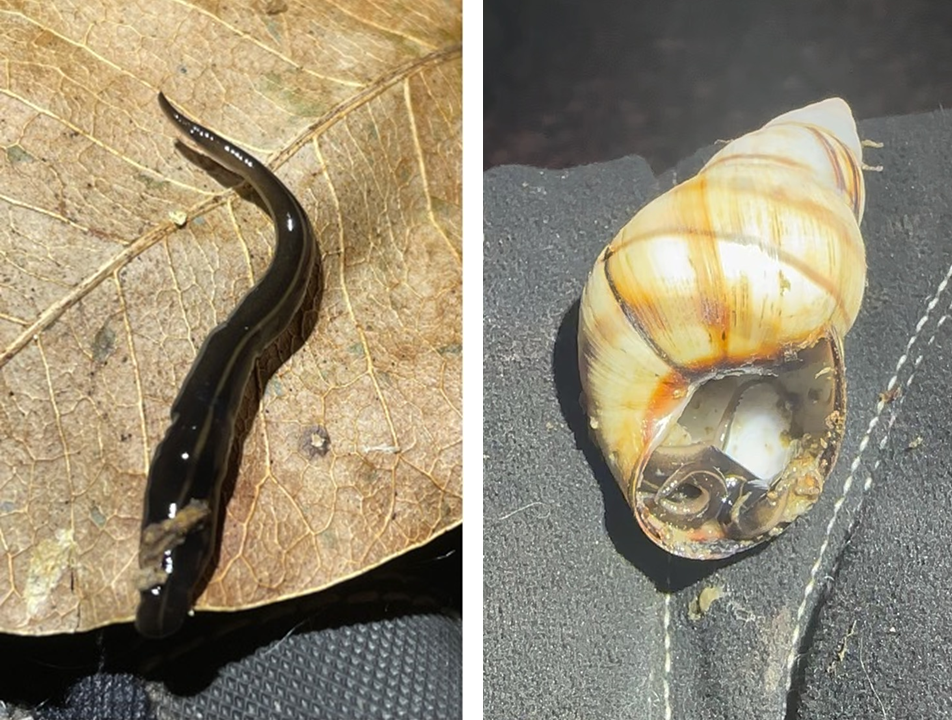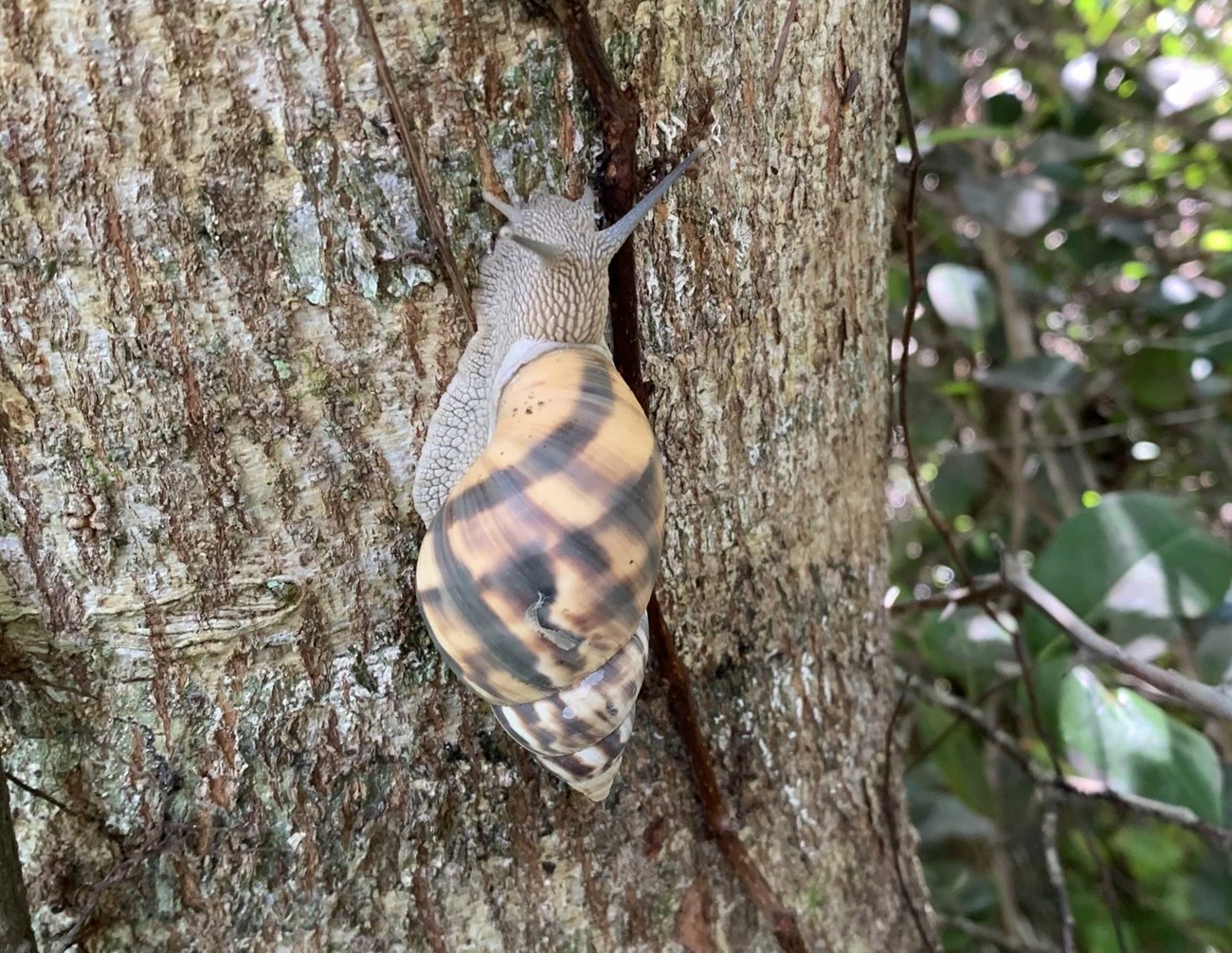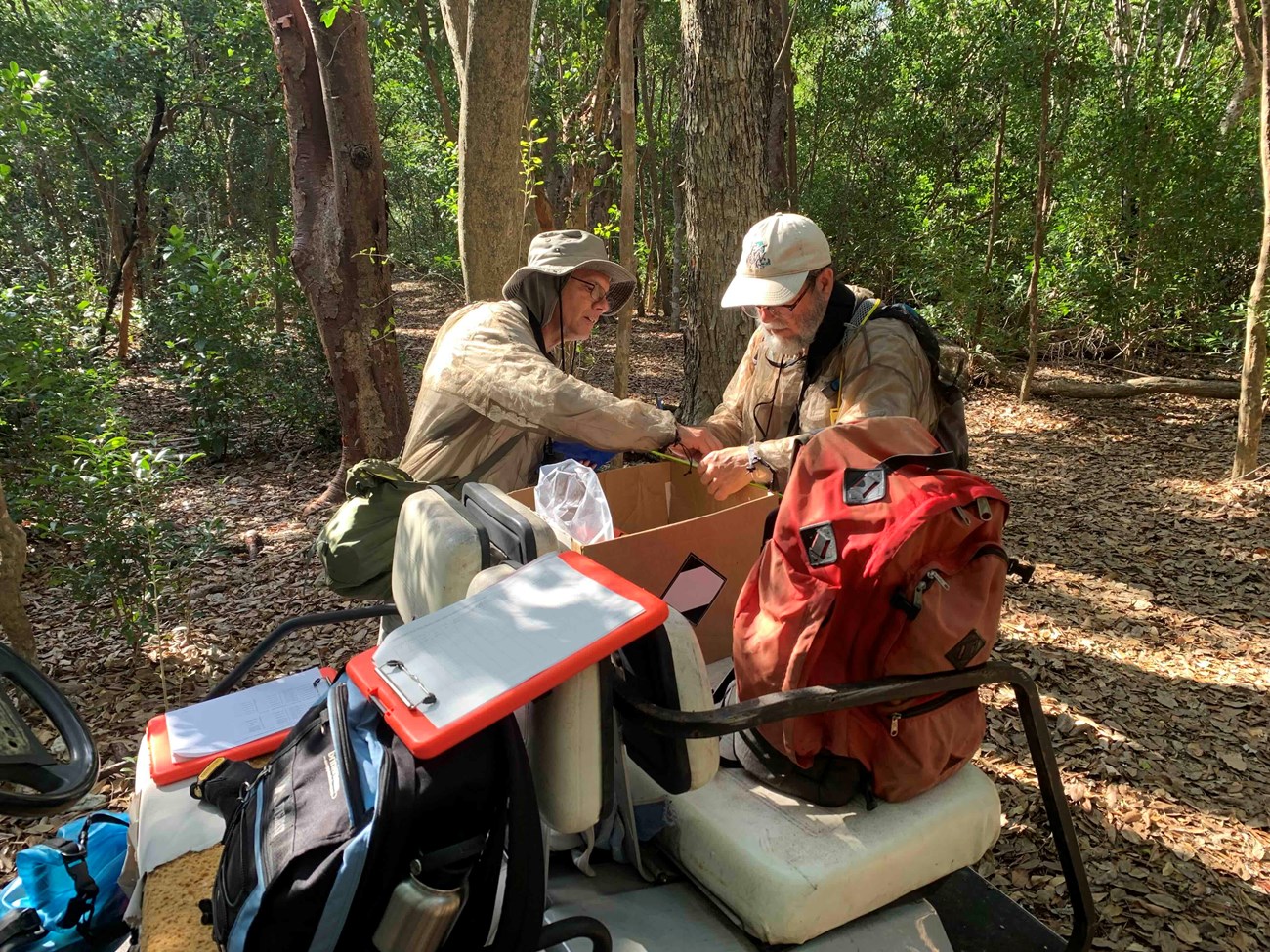Last updated: July 31, 2025
Article
Investigating an Invasive Predator: Researching Flatworms to Protect Florida’s Native Snails
By Christina Martin, I&M Research Scientist and Communication Specialist
May 2025
As the sun dips below the horizon in Everglades National Park (NP) and Big Cypress National Preserve (NPres), a tiny predator emerges from the leaf litter. It glides through the darkness, following the shimmering trail of snail mucus left behind by its unsuspecting prey. When it reaches a gorgeously patterned tree snail, others soon follow, gathering around their meal. The snail, a vital part of Florida’s ecosystem, has no chance. The predators consume it alive.
This stealthy killer is the New Guinea flatworm (Platydemus manokwari)—a non-native species ranked among the world’s worst invasives. First discovered in Everglades NP in 2017, these flatworms are now spreading, threatening Florida’s delicate tree snail populations.

NPS / Lawrence Lopez
A Growing Threat to Native Snails
Everglades NP and Big Cypress NPres are home to a dazzling array of tree snails, including the vividly banded Florida tree snail (Liguus fasciatus) and federally protected Stock Island tree snail (Orthalicus reses). These snails feed on algae and lichen growing on trees and serve as a crucial food source for native birds, mammals, reptiles, and insects.
Unfortunately, their numbers are declining due to multiple threats, with predation by the New Guinea flatworm being a significant factor. Scientists suspected the flatworm had spread deep into Everglades NP and Big Cypress NPres but lacked solid data. To fill this information gap, the National Park Service’s Inventory and Monitoring Program launched a study to investigate the flatworm’s spread and explore management strategies.

NPS / Timothy Collins
Tracking the Flatworm Invasion
A research team from Florida International University, led by biologists Dr. Timothy Collins and Dr. Lawrence Lopez, set out to uncover the flatworm’s reach. They surveyed 26 sites in Everglades NP and 10 in Big Cypress NPres, working long hours in challenging conditions.
At night, headlamps pierced the darkness as they crawled through leaf litter and scanned tree trunks, on the lookout for flatworms while brushing away mosquitoes and dodging snakes. When they spotted flatworms, they collected samples for genetic analysis to determine species and diet.
By day, the team shifted their focus to the trees, looking for native snails that become more active in daylight. Their search spanned from the ground to the canopy, inspecting every surface for signs of tree snails.

© Timothy Collins
Flatworm Invasion Revealed
The study confirmed scientists’ fears: invasive flatworms are driving declines in native tree snails.
Tree snails were found at all ten sites in Big Cypress NPres, but in lower numbers than past surveys. At a site once known for its thriving Florida tree snail population, not a single snail was found. At another, scientists witnessed flatworms actively consuming multiple snails. In Everglades NP, tree snails were found at 13 of 19 sites. However, flatworms were present at sites with small snail populations or where only empty shells remained, suggesting they may be contributing to snail losses.
The federally protected Stock Island tree snail was found in healthy numbers at just one Everglades NP site. In Big Cypress NPres, it appeared at only two locations, with an average of just six snails—likely too few to sustain the populations under flatworm pressure.

© Timothy Collins
The study also revealed a concerning pattern: New Guinea flatworms are thriving in areas with high human activity. Roads, trails, and visitor centers act as gateways for these invaders. The flatworms and their small, dark egg cases hitch rides on boots, vehicles, and even potted plants. Once introduced, they spread deeper into the parks, putting tree snails at greater risk.
In a surprising twist, researchers identified seven additional non-native flatworm species and one non-native ribbon worm (Geonemertes pelaensis). Their impact on native snails is unknown, as scientists are still determining what they eat and how they might affect the ecosystem.
Next Steps for Protecting the Parks
While the situation is serious, the research team identified some key ways to slow the spread of invasive flatworms, providing potential paths forward for park managers. They recommend scheduling activities like tree trimming during winter months when flatworm numbers are lower, reducing the risk of unintentional spread. Establishing decontamination protocols for gear moved between sites—like protocols followed by the researchers throughout this study—can also help limit the spread.
At this time, park managers are evaluating potential management strategies based on the results of this study. Visitors can also play a role in protecting native snails by cleaning their boots, gear, and vehicles before and after visiting the parks to avoid unintentionally transporting flatworms or their egg cases, which are small and easy to overlook.
This study has given park managers vital data to better understand and address the New Guinea flatworm invasion. While challenges remain, continued research, awareness, and responsible visitor practices can help slow its spread. By working together, scientists, park staff, and visitors alike can contribute to preserving Florida’s incredible tree snails.
Please remember that it is illegal to take and collect anything from your national parks.
Tags
- big cypress national preserve
- everglades national park
- inventory
- inventories
- species inventory
- inventory and assessment
- inventory and monitoring division
- natural resource stewardship and science
- everglades national park
- big cypress national preserve
- florida
- biodiversity
- snails
- invasive species
- resource management
- natural resource management
- collaborative conservation
- south florida caribbean network
- sfcn
